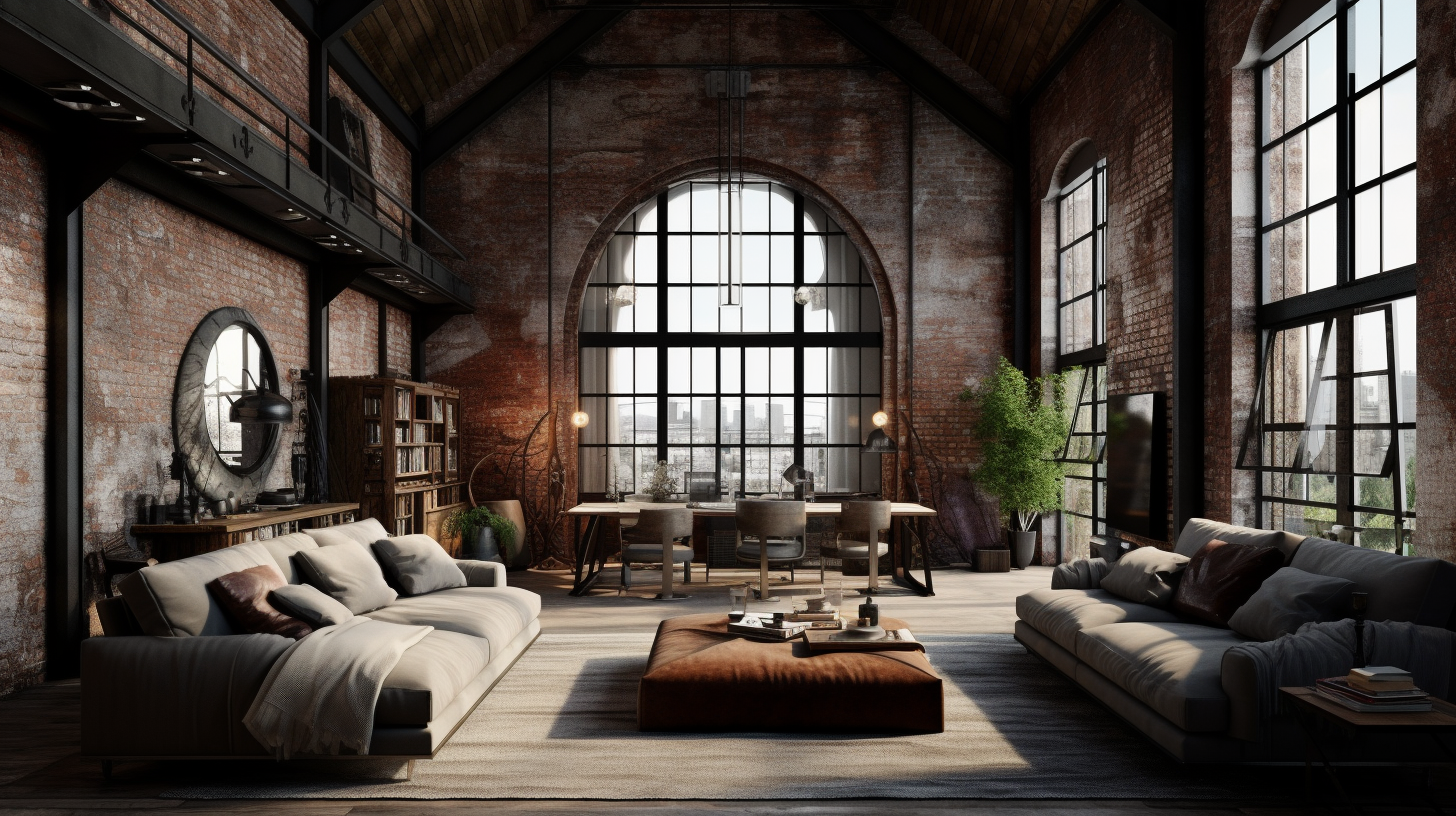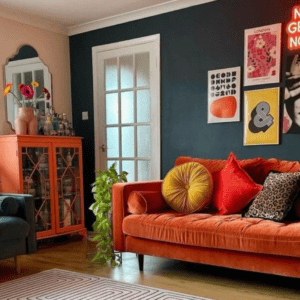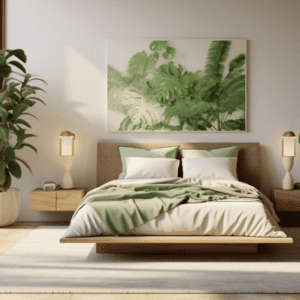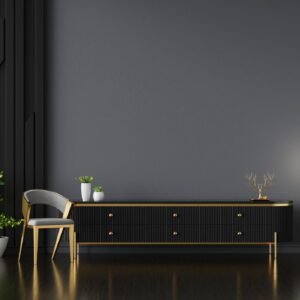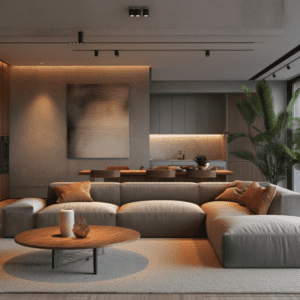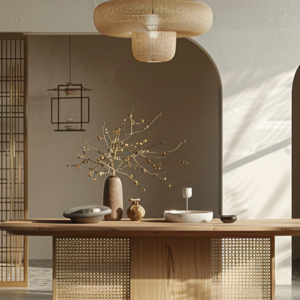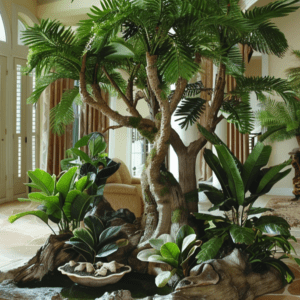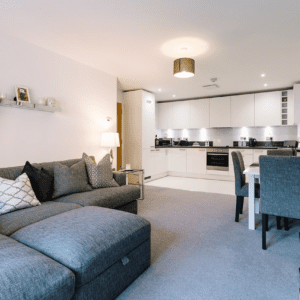Are you someone who likes wide-open spaces, simple decorations, rough textures, and colors like beige and gray? If you said yes, industrial-style interior design might be just what you want. Let’s talk about this unique style that’s becoming popular again.
So, what exactly is industrial interior design? What makes it different from other styles? How can you make your home stand out with industrial-style decor? Keep reading to get all the answers.
Even though it might seem very modern, industrial design, especially in architecture, actually goes way back to the industrial revolutions and the growth of big factories, industries, and warehouses. It celebrates exposed elements like pipes, brick, and concrete while following a minimalist design approach. This style also incorporates Edison light bulbs, open floor plans, and a cool, neutral colour scheme.
The original architectural and design features, like big windows, tall ceilings, exposed brick and concrete walls, and visible pipes and ducts, are what make industrial style stand out. These rugged features are usually kept and sometimes changed a bit to fit with modern looks. Since it mostly keeps all its original structure and materials, industrial interiors are good for the environment and sustainable.
Roots of Industrial Interior Design
The roots of industrial interior design can be traced back to the time of the Industrial Revolution, even though it’s seen as a modern style. This design approach took shape when massive factories were built to accommodate large machines and a considerable workforce.
During the First Industrial Revolution in the 1760s, mass production started in urban areas of Europe and the United States. The design of factories included features like spacious grid-paned windows to allow fresh air and natural light, open floor plans, lofted floors, and exposed brick walls. These elements were not only for aesthetics but also for safety reasons. For example, exposing the brick walls was safer than covering them with flammable plaster.
The Second Industrial Revolution in the 1870s led to even larger factories as businesses consolidated their operations in one location. These factories required stronger materials like concrete and steel, which were also left exposed in the design. It was during this time that the first Edison light bulbs, a defining feature of industrial lighting, were invented. The era also influenced the steampunk genre and style.
In the 2000s, when housing shortages were a concern in urban areas like New York, the industrial style came into its own. Old factories were converted into trendy industrial loft apartments, showcasing their basic structural elements of exposed materials and large windows, which became attractive selling points.
In recent times, the rise of minimalism has contributed to the popularity of industrial interior design. The rustic and repurposed elements of this style complement the clean and straight lines that are prevalent in modern and minimalist design. This design trend has expanded beyond urban areas and can now be found in large suburban homes with open floor plans, sizable windows, and neutral colour palettes. Additionally, the style has gained popularity in Scandinavian design, where its neutral palette, distressed leather, and use of reclaimed wood and raw materials blend harmoniously with the cosy and minimalist concept of “hygge.”
Characteristics of Industrial Interior Design
Industrial Interior Design possesses several characteristics that distinguish it and offer inspiration for decorating ideas:

Neutral colours: Instead of using only pure white shades like other minimalist styles, industrial spaces embrace a range of whites, greys, blacks, and various natural tones of brown.
Emphasis on natural light: Industrial decor commonly incorporates sizable windows with black panes, often arranged in a grid pattern, to maximise the influx of natural light.
Showcasing architectural materials: The industrial style favours open floor plans and high ceilings, showcasing the raw beauty of materials like exposed brick, concrete floors, industrial pipes, and visible ductwork, instead of concealing them behind drywall or wallpaper.
Repurposed materials: Integrating repurposed elements is a key aspect of industrial design. Furniture items like wooden coffee tables with castor wheels, bookshelves made from reclaimed materials, and repurposed dining tables are common in industrial-styled spaces, adding a touch of nature to the otherwise metal-heavy surroundings.
Bare light bulbs: Industrial home decor often features Edison bulbs either hanging alone or arranged decoratively as chandeliers. Alternatively, large metal domes, pendant lights, or floor lamps that expose the bulbs are also popular in industrial design.
Clean, graphic lines: The industrial style favours clean and sharp lines, such as window panes or iron wheels on bar stools, often crafted from black metals. This differs from the bold and elaborate patterns seen in art deco design, which emphasises vibrant colours and metallics.
Cosiness with natural textiles: Industrial interiors achieve a cosy and lived-in atmosphere through the use of natural textiles like weathered leather or linen for furniture and accents.
These defining features of industrial interior design can inspire a unique and captivating ambiance for any living space.

